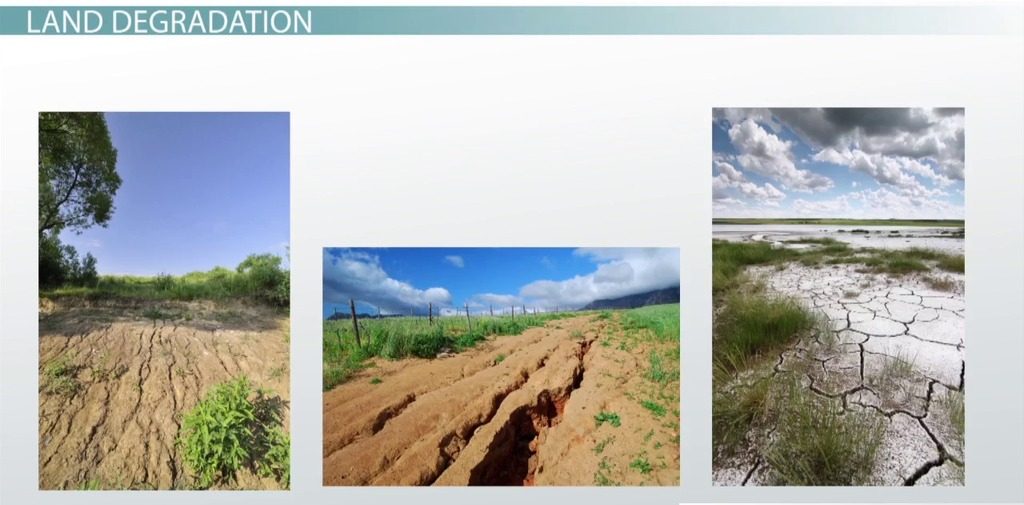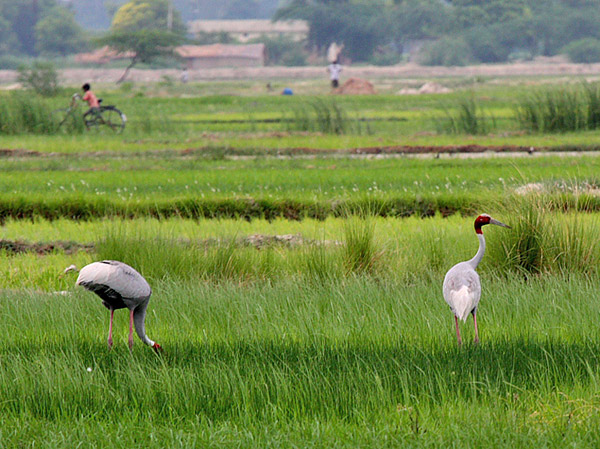Land degradation is a silent crisis that is quietly undermining the very foundation of human civilization: agriculture. The quality and quantity of arable land are deteriorating at an alarming rate, posing a severe threat to food security, livelihoods, and the environment. In this article, we will delve into the intricate relationship between land degradation and agriculture, exploring its causes, consequences, and sustainable solutions.
The Land Degradation Puzzle
To understand the impact of land degradation on agriculture, it’s essential first to grasp what land degradation entails. Land degradation refers to the deterioration of the quality and productivity of land, often resulting from human activities such as deforestation, overgrazing, urbanization, and unsustainable agricultural practices. It manifests in various forms, including soil erosion, desertification, salinization, and loss of biodiversity.
The Causes of Land Degradation
Unsustainable Agriculture
One of the primary drivers of land degradation is unsustainable agricultural practices. Practices like monoculture farming, excessive use of chemical fertilizers and pesticides, and improper irrigation techniques can lead to soil erosion, nutrient depletion, and soil compaction.
Deforestation
Deforestation, driven by urbanization, logging, and agriculture expansion, disrupts ecosystems and accelerates land degradation. Trees play a vital role in stabilizing soil and preventing erosion, so their removal can have dire consequences for the land.
Overgrazing
Overgrazing by livestock can lead to the degradation of grasslands, resulting in soil erosion and loss of plant diversity. Without proper management, overgrazing can turn productive pastures into barren wastelands.
Urbanization
The expansion of cities and infrastructure often results in the conversion of agricultural land into urban areas. This not only reduces the available arable land but also disrupts natural water flow and contributes to soil sealing.
The Consequences of Land Degradation
Declining Agricultural Productivity
Land degradation directly affects the productivity of agriculture. Nutrient-poor soil and erosion reduce crop yields, making it increasingly challenging to meet the demands of a growing global population.
Food Insecurity
As agricultural productivity declines, food security becomes a critical concern. With land degradation threatening the ability to grow enough food, many regions face the risk of food shortages and increased vulnerability to hunger.
Environmental Degradation
Land degradation isn’t limited to its impact on agriculture; it also has far-reaching environmental consequences. Soil erosion can lead to sedimentation in rivers and lakes, harming aquatic ecosystems. Loss of biodiversity further disrupts fragile ecosystems.
Economic Implications
The economic ramifications of land degradation are substantial. Reduced agricultural output can lead to income loss for farmers and increased food prices for consumers. Additionally, restoring degraded land requires significant investments.
Sustainable Solutions
The path to addressing land degradation and its impact on agriculture is through sustainable practices and policies. Here are some solutions that can mitigate and, in some cases, reverse the effects of land degradation:
Conservation Agriculture
Conservation agriculture involves practices like minimum tillage, crop rotation, and cover cropping. These techniques improve soil health, reduce erosion, and enhance overall sustainability.
Reforestation and Afforestation
Efforts to replant trees and restore forests can counteract deforestation and provide essential ecosystem services, including soil stabilization and carbon sequestration.
Improved Grazing Management
Implementing sustainable grazing practices, such as rotational grazing and maintaining proper stocking rates, can prevent overgrazing and promote healthier rangelands.
Sustainable Urban Planning
Urbanization is inevitable, but sustainable urban planning can help mitigate its impact on agricultural land. Strategies like urban agriculture and green infrastructure can coexist with urban development.
Conclusion
Land degradation poses a severe threat to agriculture and, by extension, to global food security. Understanding its causes and consequences is crucial for devising effective solutions. Sustainable agricultural practices, reforestation, improved grazing management, and thoughtful urban planning are all part of the toolkit to combat land degradation. As stewards of the land, it is our responsibility to protect and nurture it for future generations, ensuring a sustainable future for both agriculture and the planet.





